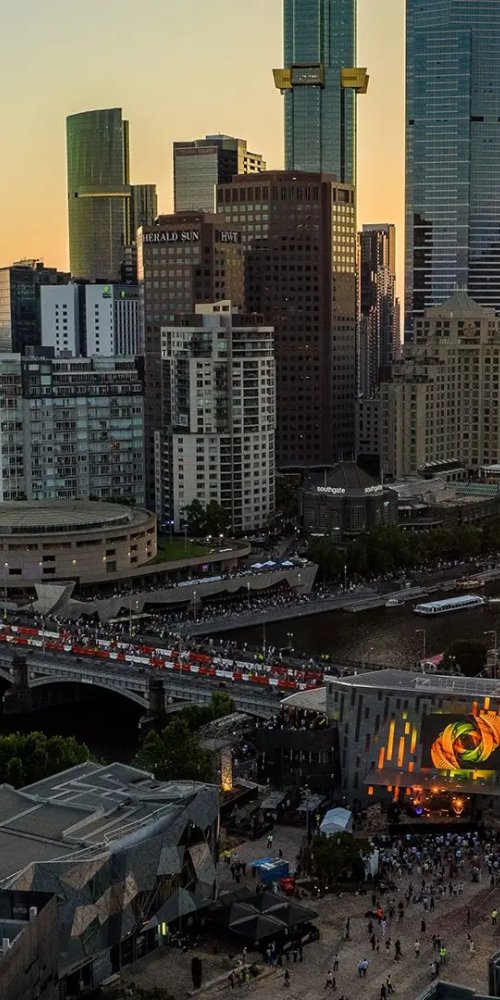

Step onto any platform or tram stop in Melbourne, VI, AU, and you’ll immediately feel the city’s pulse. The sharp beep of ticket barriers welcoming you aboard a rush-hour train blends with the dulcet clang of tram bells weaving through busy streets. Voices swirl around you - in Mandarin, Italian, Hindi, Arabic - reflecting the city’s vibrant cultural tapestry. The scent of fresh roasted coffee mingles with the faint aroma of eucalyptus from open windows. Here, public transport is more than just a means to an end; it’s part of the city’s rhythm, inviting you not merely to move but to partake in Melbourne’s everyday dance.

Choosing public transport in Melbourne isn’t merely about getting from A to B. It’s about experiencing the city in a way cars can’t offer: stress-free, eco-friendly, and often quicker than crawling through traffic. Public transport far outpaces driving when you’re headed into the bustling CBD or popular neighbourhood hotspots like Fitzroy and St Kilda.
Costs are surprisingly affordable, too. A single trip averages just $4.50 AUD, with daily caps ensuring you never overspend - perfect for travellers looking to stretch their budget. When I first climbed the cathedral tower and then hopped on a tram for the sunset, I was astounded by how inexpensive and efficient the system felt.
Using trains, trams, or buses reduces carbon emissions significantly compared to private cars. Melbourne’s extensive network is powered increasingly by renewable energy sources, underscoring the city’s commitment to sustainable travel. Plus, navigating public transport lets you blend into local life and glimpse neighbourhoods you might otherwise miss.
| Mode | Lines | Peak Frequency | Night Service |
|---|---|---|---|
| Metro (Train) | 16 | 5–10 minutes | Limited Night Network on weekends |
| Tram | 25 | 7–12 minutes | Weekend Night Trams on selected routes |
| Bus | 75+ | 15–30 minutes | Some Night Bus routes |
| Ferry | 3 | 30–60 minutes | No |
| Bike-Share | Thousands of docking stations | N/A | 24/7 |
Melbourne’s multifaceted network offers options tailored to your pace and itinerary. Trams crisscross the inner city with charming vintage charm, while the metro lines whisk you quickly to suburbs like Footscray or Camberwell. Buses fill in gaps where rails don’t reach, and ferries offer a scenic route along the Yarra River or to the bayside. This variety means you can fully customise how to get around Melbourne, VI, AU, avoiding congestion and maximising your adventure.
Understanding peak times in Melbourne’s public transport network can save you time and spare you the crunch. Typically, peak hours are 7:00–9:30am and 4:30–6:30pm on weekdays, when trains and trams brim with commuters heading to offices or school.
During these windows, expect delays and crowded carriages, especially on core metro lines like the Hurstbridge or Frankston routes. Conversely, off-peak travel offers quieter journeys and a relaxed atmosphere - ideal if you’re eager to soak in the city views from the tram without elbowing for space.
One insider tip: some fare products like the 24-hour pass have no difference in cost between peak and off-peak, making them a savvy choice for flexible itineraries.
Night services run on select routes weekends, which is fantastic if you’re catching a late show or exploring Melbourne’s vibrant nightlife without worrying about rideshare surge pricing.

Trams from the Flexi Tram fleet and most newer train stations have low-floor access and priority seating, ensuring smooth rides for wheelchair users. Always look for the universal access icons and use designated boarding points.
Parents will appreciate that most platforms and vehicles accommodate prams, but during peak hours, space can be limited. Boarding at less busy stops often means a more pleasant journey.
If you’re lugging luggage, the SkyBus shuttle is your easiest option between the airport and downtown, but regular buses and trains also allow bags. Elevators and ramps are widespread across stations, though escalators can be crowded; pack light if possible.
The easiest way is using a Myki card available at stations, retailers, or via the Myki app. Boarding a bus without a valid Myki or cash fare risks a fine. Contactless card payments are gradually expanding but check the route first.
Yes, selected tram routes run Night Network services Friday and Saturday nights, letting you explore Melbourne’s nightlife safely. Check schedules ahead, as not all routes operate overnight.
Absolutely. Most single tickets are valid for two hours across trains, trams, and buses within your travel zones, making switching modes a breeze.
Contactless credit/debit cards and mobile wallets are accepted on trains and trams but are limited on some buses. They also have daily fare caps, ensuring you don’t overspend.
I hope this guide has boosted your confidence in navigating public transport in Melbourne, VI, AU. Whether hopping a tram to your next coffee haunt or taking the metro out to sprawling suburbs, you’re now equipped to travel smart and sustainably. Share your experiences, questions, or favourite routes in the comments below and don’t forget to subscribe to our newsletter for more insider travel tips delivered straight to your inbox. Safe travels!

Additional articles from our network with useful insights about Melbourne.